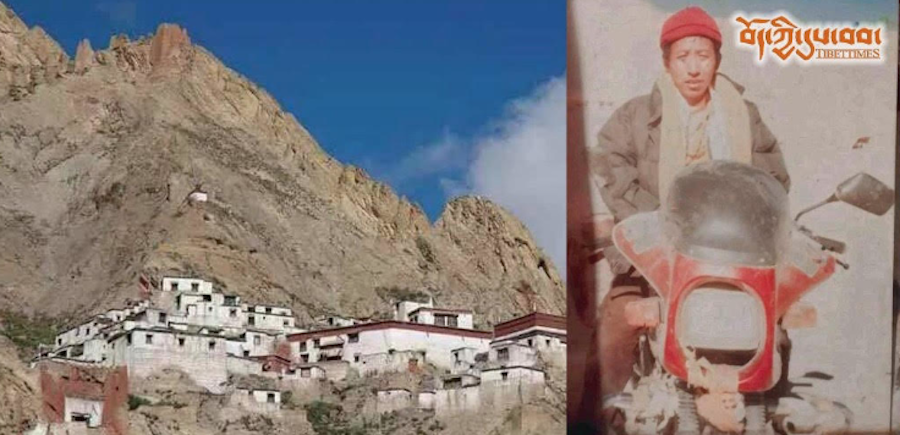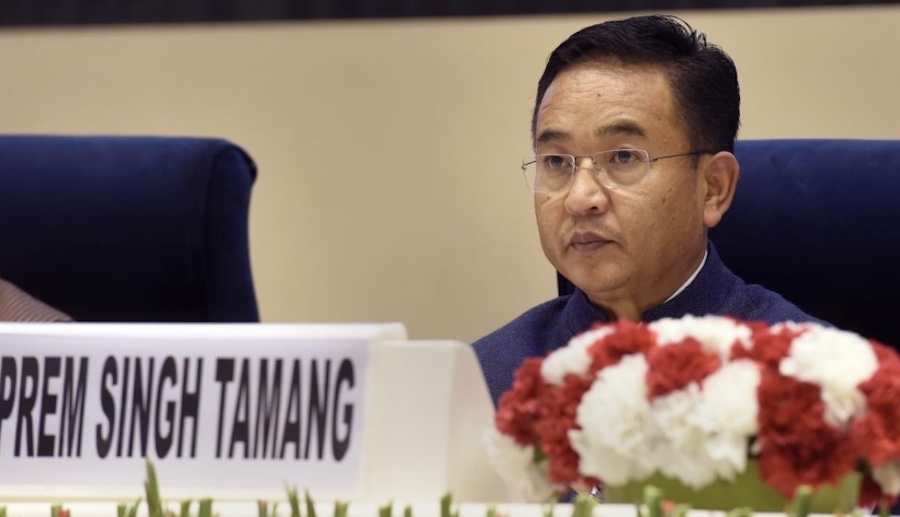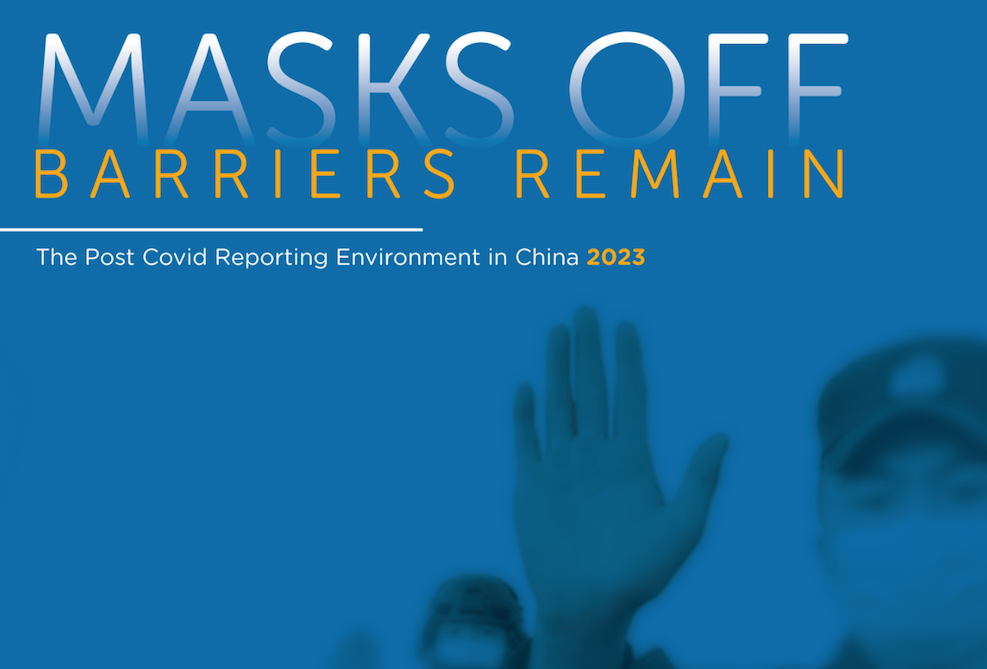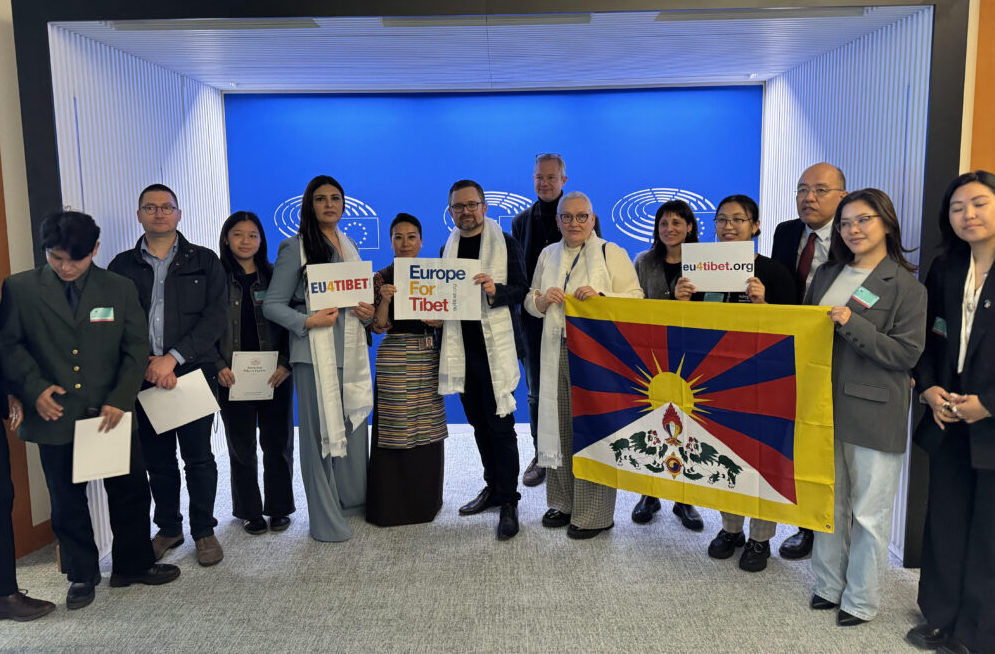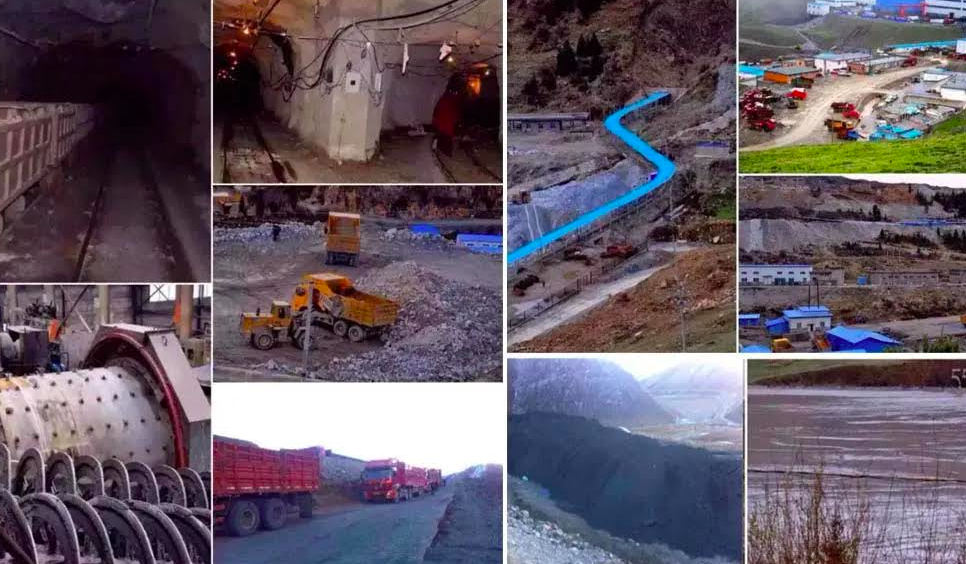China’s claim that “Old Tibet” was a feudal serfdom is fiction
Beijingspeak
‘Old Tibet was a hell on earth, a theocratic feudal serfdom headed by Dalai and his upper class clique oppressing ninety percent of Tibet’s population. It was a dark, reactionary, barbaric, cruel, backward society infested with imperialist agents. So, China sent over 20,000 PLA troops – to pacify the reactionaries and to peacefully liberate Tibet thus freeing over a million serfs. The emancipated Tibetan masses were united with Motherland where they live harmoniously with all other ethnic minorities.’
Let’s hold on for a minute. Beijing sums up Tibet, its civilization and nationhood in two small paragraphs. Incredibly absurd – and awfully naive as it is, this is the fundamental argument that China has, and will ever have, to assert its claims over Tibet and to justify its violent occupation.
Yang Shang-kun, former President of China and a Long March survivor, advised, “Historical problems should be studied in general, not in detail … We should only describe the great importance and the decisive role of the Red Army’s Long March … Once we go into detail, we will run into numerous problems which cannot easily be solved.” He was speaking to Party historians.
Yang, like his Party, gave the green light to create myth and avoid truth. The result of such myth creation is obvious such as the omission from the history of the Long March of the two defeats the 1st Army suffered in the battles at Tucheng and Zunyi. Mao led the army in both the fights and suffered heavy losses.
Truth is a bitter pill. It has the power to cure illnesses too. However, for Beijing, truth is a stranger like the rule of law, individual freedoms and democracy. Even truth about its own historically crucial event like the Long March is unpalatable enough to be deleted.
No wonder then that China has been reiterating the same lies about Tibet for over fifty years. One must envy Beijing’s Propaganda Ministry for its rich epithets to describe “Old Tibet”. One can only guess that what they lack in truth must be supplemented by vivid adjectives. After all painting the “Old Tibet” as an evil society is the only reason that legitimises Beijing’s control over Tibet.
Our Tibet Their Tibet
Before the Chinese invasion in 1949, Tibet was neither an ideal society nor “a feudal serf system.” It was a politically independent, economically self-sufficient and culturally distinct nation with a different way of administration than many countries around the world at that time.
Starting with Songtsen Gampo in the seventh century, Tibetan rulers issued codes of ethics based on Buddhist principles. The essence of this was that the rulers should act as parents to their subjects. This was reflected in Songtsen’s “Sixteen Moral Principles”; Regent Phagmodrupa Jangcup Gyaltsen’s (1303-1364) “Fifteen Legal Guidelines or Penal System”; and Regent Karma Tenkyong Wangpo’s (early 17th century) “Sixteen Legal Guidelines or Penal System” and “Thirteen Legal Guidelines or Penal System.” These were legal instructions based on which punishments were given to convicted criminals and law breakers.
As in any other society, Tibet had many methods of punishment sanctioned by law, some of which were indigenous. However, according to contemporary Tibetan scholar Jamyang Norbu, most of these penal punishment such as the cangue − which Tibetans appropriately call the gya-go or “Chinese door” − and execution by decapitation originated from the Manchus. (full article available at: www.jamyangnorbu.com/blog/2009/05/17/from-darkness-to-dawn/)
These measures were never lightly used but were decreed only in cases of repeated crime. In 1898, Tibet passed a law abolishing many of the above-mentioned forms of punishment, except in rare cases of high treason or conspiracy against the state. Banishing convicts to distant places within Tibet was the preferred punishment; this was the fate of Kunphel-la, who was exiled to a remote monastery in Kongpo. Kunphel-la was the favourite of the Thirteenth Dalai Lama, but was later charged and found guilty of failing to report the fatal illness of the Thirteenth to the Cabinet.
The legal system, and the rule-of-law, became more advanced over the centuries and by the beginning of the 20th century any citizen who was not satisfied with a legal judgement passed by the local administrator − or was mistreated by an estate-holder could directly appeal to the Dalai Lama, Tibet’s supreme temporal and religious leader.
Compared to China of that time and even today’s China where the ordinary citizens do not have fair trials, or the rule of law and individual freedoms, “Old Tibet” was a far more civil society. This was attested by “the testimony of Tibetans, Chinese and other foreign visitors [to Tibet] of the time,” Warren Smith writes in China’s Tibet? Autonomy or Assimilation.
All land on the Tibetan Plateau belonged to the state. “The Tibetan government administered most of Tibet indirectly through traditional princes, nomadic chieftains, [and] monasteries,” writes Smith. For their services, the government gave them the power to collect taxes from the area under their jurisdiction. The state, in turn, received revenues and services from estate holders.
Monasteries served as schools, universities and centres for Tibetan art, craft and medical care. The role of monasteries as highly disciplined centres of Tibetan education and intellectual hubs was central to the traditional Tibetan way of life. They also performed religious functions for the government.
The largest proportion of land in “Old Tibet” was held by the peasants who reimbursed the state directly. This was the main source of revenue for the government. These taxes were mostly paid in produce such as grain, wool, butter etc. They could also be paid in labour and transport services to government officials.
A very small percentage of the population – mostly in Central Tibet – were tenants. They held their lands on the estates of aristocrats and monasteries, and paid rent to the estate-holders in kind or in physical labour. According to Smith, they became “relatively wealthy and were sometimes even in the position of loaning money or grain to the estate. They also had legal rights to initiate legal action against the estate owner. The final arbiter in such cases was the Dalai Lama himself.”
No system is perfect, and the administration of Tibet before the Chinese occupation was far from being exemplary. There were excesses on some estates by over-enthusiastic owners because of which many tenants suffered. But on the whole the system worked equally for rich and poor. Throughout her history Tibet never experienced famine and the number of beggars could be counted with your fingers.
Thus, to brand the entire system as “a backward theocratic feudal serfdom” is Han-chauvinism and a total distortion of Tibetan civilization to suit Beijing’s political needs.
Tibet experienced her first-ever famine under Mao’s Great Leap Forward campaign (1959-61). This was a mad mammoth plan that ended in full-scale economic disaster, killing at least 36 million people in China and Tibet.
Worsening the situation was the creation of utopian people’s communes through which the Party, headed by Mao, according to Liu Xiaobo, one of China’s most outspoken critic, who was recently sentenced to 11 years in jail, “[had] turned hundreds of millions into pliant slaves.” With no private property, individual freedoms and a total ban on freedom of expression China itself became an Orwellian nightmare.
The tentacles of the Party’s suppression have grown widespread in today’s China. Its economic success, writes Minxin Pei “obscures the predatory characteristics of its neo-Leninist state. But Beijing’s brand of authoritarian politics is spawning a dangerous mix of crony capitalism, rampant corruption, and widening inequality.” The gap between rich and poor is one of the highest in the world.
The Party State controls over half of the country’s fixed industrial assets. It has monopoly over all the important sectors such as automobiles, natural resources, telecommunications, and energy. The Party uses these economic leverages to shower business contracts on favoured elites. In other words, Beijing practices a kind of feudal system in which the Party grants its selected subjects expensive hand-outs, while leaving an overwhelming majority of the population hungry, angry and dissatisfied.
Beijing’s record in Tibet is even more dismal. Over the last fifty years, Tibet’s traditionally self-sufficient economy has been turned into a potpourri where hardline socialist policies are practiced by a bunch of “neo-Leninists opportunists” in capitalist garb to snatch hand-outs by the State. Tibetan people are forced to witness their land and immense natural resources being grabbed, and their culture irreparably destroyed. Any dissenting voices from intellectuals, peasants and nomads are silenced by relentless crackdowns, disappearance, lengthy jail sentences and executions.
Beginning with so-called Democratic Reforms in the early days of occupation, to the creation of totally ludicrous events like Serf Emancipation Day in 2009, Beijing has systematically mapped out elaborate and often watertight policies, directives and guidelines to turn Tibetans into permanently pliable subjects.
As a result, Tibet has become “the shadow of a cruel and relentless Darwinian reality … a world of paid informers, secret police, prison walls, torture, executions, unemployment, racism, threat of extinction, and overwhelming cultural loss; revealing itself in individual lives families, violence and growing hopelessness,” writes Jamyang Norbu. This is the reality Tibetans live under every day − far from the Tibet that Beijing portrays in its official magazines featuring over-saturated colour photos of smiling nomads on sky-embracing grasslands and the tall buildings in the cities with no hearts inside.
Harmonious Mouths, Marching Disinformation
Beijing’s Tibet publicity package is old wine in an old bottle. China has been consistently mouthing the same false claims about Tibet being a dark, backward feudal serfdom etc. etc. for over half a century. Lately, a few Tibetan elites and Party cadres are given the responsibility to chant Beijing’s propaganda.
“In old Tibet, the serf-owner class, who made up merely five percent of the Tibetan population owned the entire cultivated land and grassland and the majority of livestock and they controlled the freedom of serfs and slaves…” – Lhakpa Phuntsok, director-general of the China Tibetology Research Center.
“[Tibet’s] … social system [was] characterised by theocracy under the Dalai Lama. About one million serfs and slaves, 90 percent of Tibet’s population, were freed [by China].” – Karma, deputy director of the Standing Committee of the Tibetan Autonomous Regional People’s Congress.
“Dalai Lama and his political backers [are] the ‘chief representatives’ of the theocratic, feudal serfdom of the old Tibet.” – Ragdi, vice-chairman of the National People’s Congress Standing Committee.
Lhakpa Phuntsok further said that “the masses of emancipated serfs and their offspring living in Tibet are clear who are the guard for the Tibetan people’s fundamental interests and who are the saboteur of their happy life.” People inside Tibet clearly showed in March 2008 who are “the saboteur of their happy life” with peaceful protests against Chinese rule. Indeed, who is the saboteur and who is the guardian?
Lhakpa Phuntsok, Ragdi and other Tibetans officials in the pay of Beijing are peddling a chain of self-serving delusions manufactured by the Party, pleasing a leadership far removed from the reality in Tibet.
“Unless you [the Chinese Government] are able to break our love and respect in our hearts, all your fruitless campaigns and activities will only strengthen our unity and love for one Tibetan brother to another,” wrote Kunga Tsangyang, a young monk in Eastern Tibet, who was given a five-and-half-year prison sentence because of his writing. (full article available at: http://tibetwrites.org/?Who-are-the-real-separatists )
Such deep sentiments within the hearts of Tibetans in occupied Tibet clearly express Beijing’s failure to address the fundamental issue of Tibetan people’s rights and freedoms.
And “a common theme of Chinese propaganda has the Dalai Lama scheming to return to Tibet so as to reinstitute the serf system, the assumption being that he would then make himself the major serf lord. This is fantasy,” writes Professor Elliot Sperling in the Far Eastern Economic Review. (full article available at: www.feer.com/essays/2009/april/china-digs-in-its-heels-in-tibet )
The issue is the freedom of six million Tibetans and never a question of Dalai Lama’s personal gains and prestige. The Tibetan leader is simply asking for a democratic, transparent and peaceful Tibet based on equal rights, where Tibetans can live without being commanded to sit, stand, speak or act.
New Lords, Pot-bellied Party
In the aftermath of the large-scale peaceful protests throughout Tibet in 2008, Gongmeng Law Research Centre (Open Constitution Initiative) investigated their root causes by sending researchers into Tibetan areas. According to the findings of this bold and historic report, “[a] ‘deep-rooted’ local power elite networks have formed in many Tibetan areas, where it has become routine for the local authorities to be rent-seekers and for the administration to be inefficient.” These local Party elites, in collusion with other vested interest groups, have formed a “new aristocracy.” (full report available at: http://www.savetibet.org/media-center/ict-news-reports/bold-report-beijing-scholars-reveals-breakdown-china%E2%80%99s-tibet-policy)
Gongmeng report further mentions that “unlike the traditional aristocracy, the characteristics of this new aristocratic class are: the senior positions they occupy are legitimized, they have more complex social resources, and they are even more powerful;” and “this new aristocracy derives its legitimacy more from the ‘external source’ of central government affirmation.” As a result “their loyalty to the central government is much stronger.”
With total fragmentation of the traditional social structure and the way of life, majority of the Tibetan people are sidelined by Beijing and the new aristocrats, who engage in unaccountable activities to maximize their profits. Such is the fate of the Tibetan people in the “New China” where the ideal of classless society, which was loudly shouted about and preached in its heydays, has long been gobbled up by the potbellied Party.
Conclusion
At the onset of its occupation, Beijing launched the Democratic Reform campaign “to identify and repress the Tibetan opposition and to gain complete social and political control over Tibetans’ lives.” China continues to legitimise this stronghold by labelling the “Old Tibet” as a feudal hell-on-earth and by painting itself as the shining liberator. But the liberator has given rise to a “new aristocrats” who have the wherewithal to oppress the majority of population without any retribution. In spite of all these, Beijing has heightened its propaganda by using the newly-acquired wealth to create a modern mass media to churn out the same old party line. No matter how much Beijing polishes and repeats its absurd untruths, the reality engraved on Tibetan bones cannot be erased by lies written with a bamboo brush.





